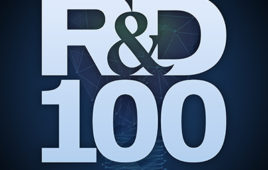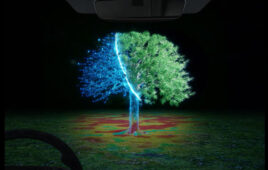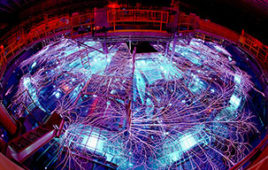 Yale scientists have developed a laser imaging system with the versatility to look at both the structure of biological tissue and the dynamic activity—such as a heartbeat or the movement of blood cells—that goes on inside.
Yale scientists have developed a laser imaging system with the versatility to look at both the structure of biological tissue and the dynamic activity—such as a heartbeat or the movement of blood cells—that goes on inside.
The new laser is a significant advance for multimodal imaging, the researchers noted. In one mode, the laser images structural information by reducing the amount of “speckle,” a random, grainy pattern that can corrupt the formation of images. Speckle is often found in the light emitted by traditional lasers that conduct high-speed imaging.
Yet speckle also carries additional information that can be useful for biological imaging. Moving blood cells, for example, can be mapped in living tissue by analyzing changes in the speckle pattern.
The new laser system is able to do imaging in both modes. It is mechanically compact and supports continuous-wave—rather than pulsed—emission. It toggles between modes thanks to a semiconductor element, while maintaining high-output power.
The Yale team reported its findings in the journal Optica.
“To illustrate its application to multimodal imaging, we used the laser to image the heartbeat of a living tadpole,” said Hui Cao, a professor of applied physics and of physics at Yale and corresponding author of the study. The laser was able to record the heart’s structures and the pumping of blood within those structures, Cao said.
Co-author Michael A. Choma, assistant professor of diagnostic radiology, pediatrics, and biomedical engineering, explained that the relationship between structure and function is fundamental to the study of biology. It is particularly true when studying micro-scale motions and flows within living tissue, he noted.
“This laser has a novel combination of properties that we didn’t have before in a reliable way,” Choma said.




